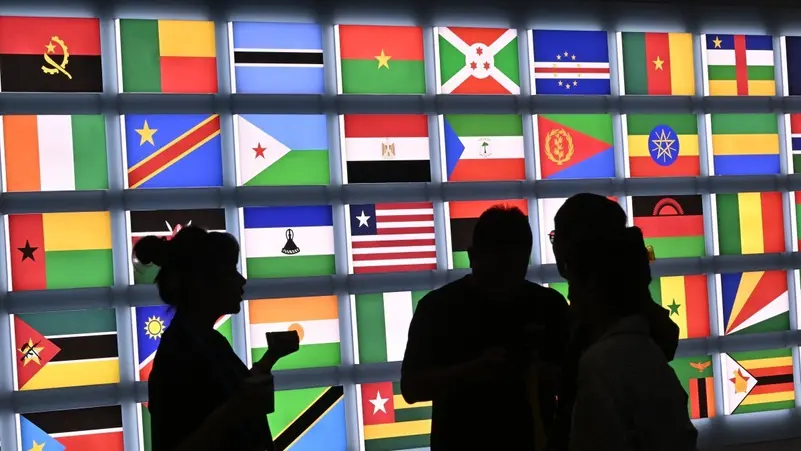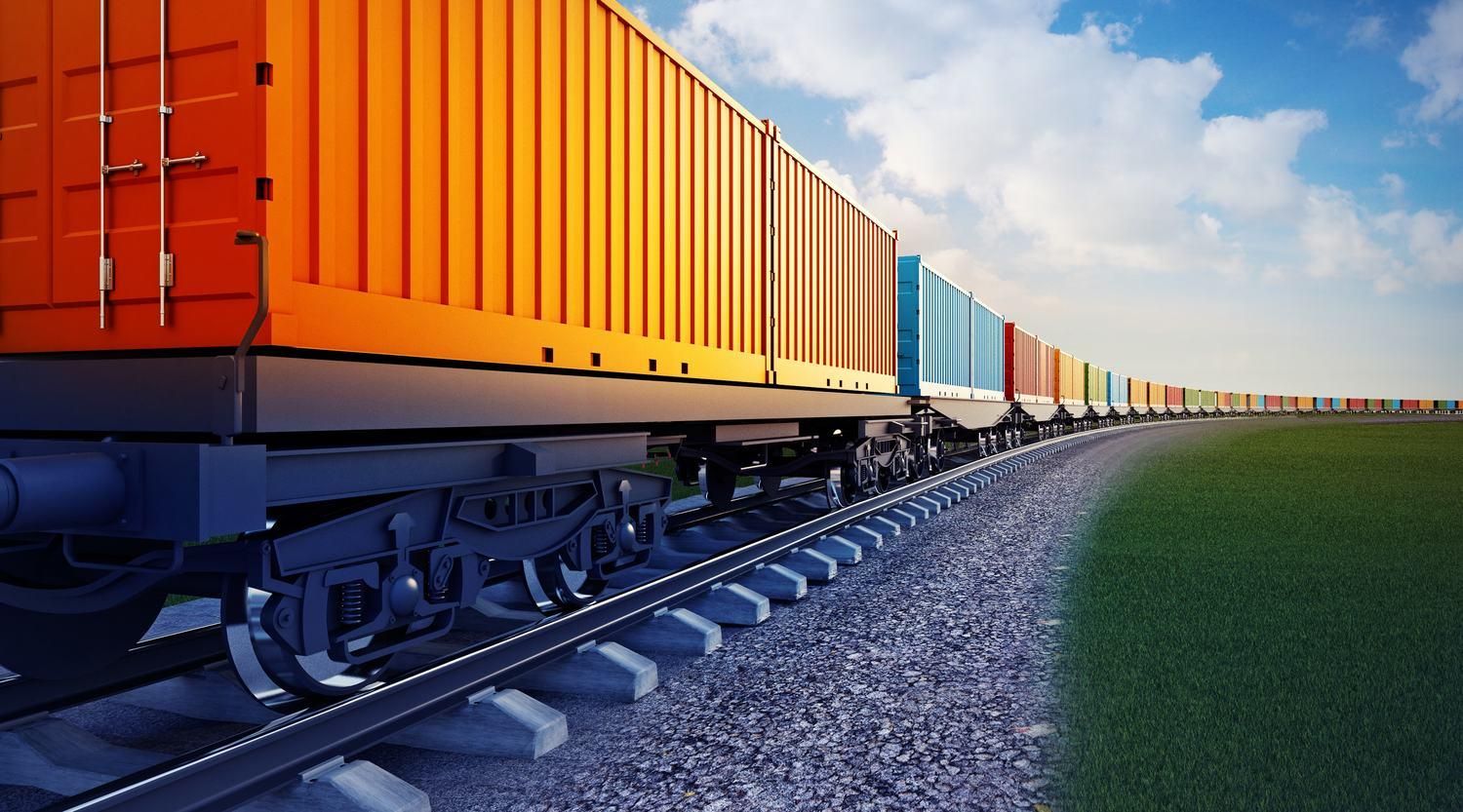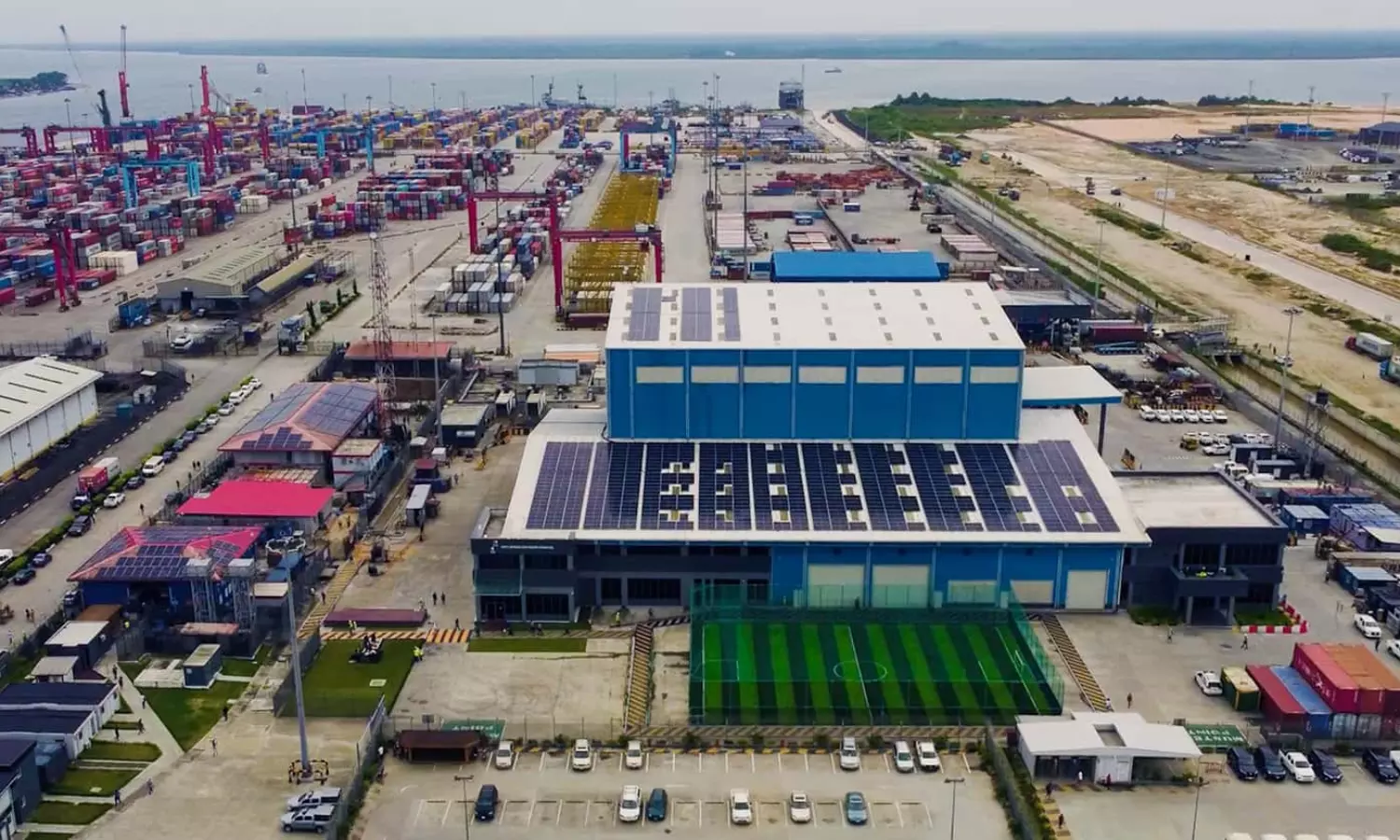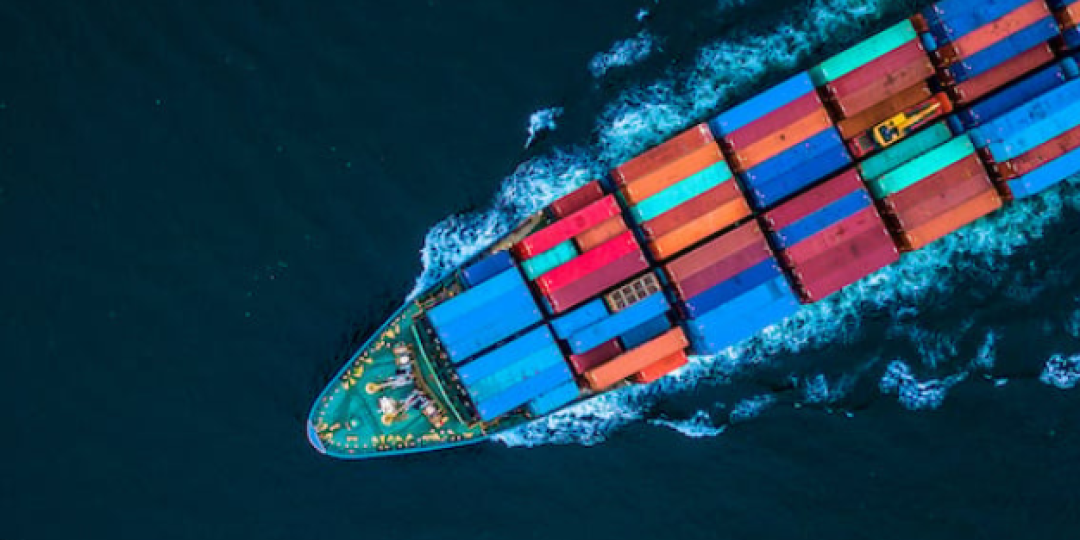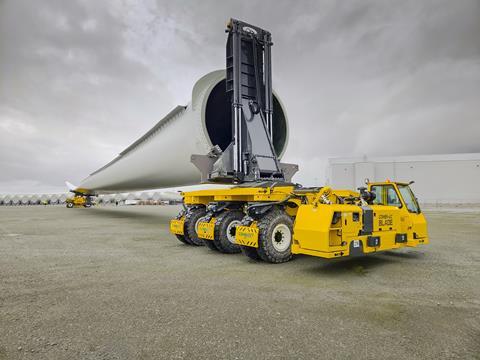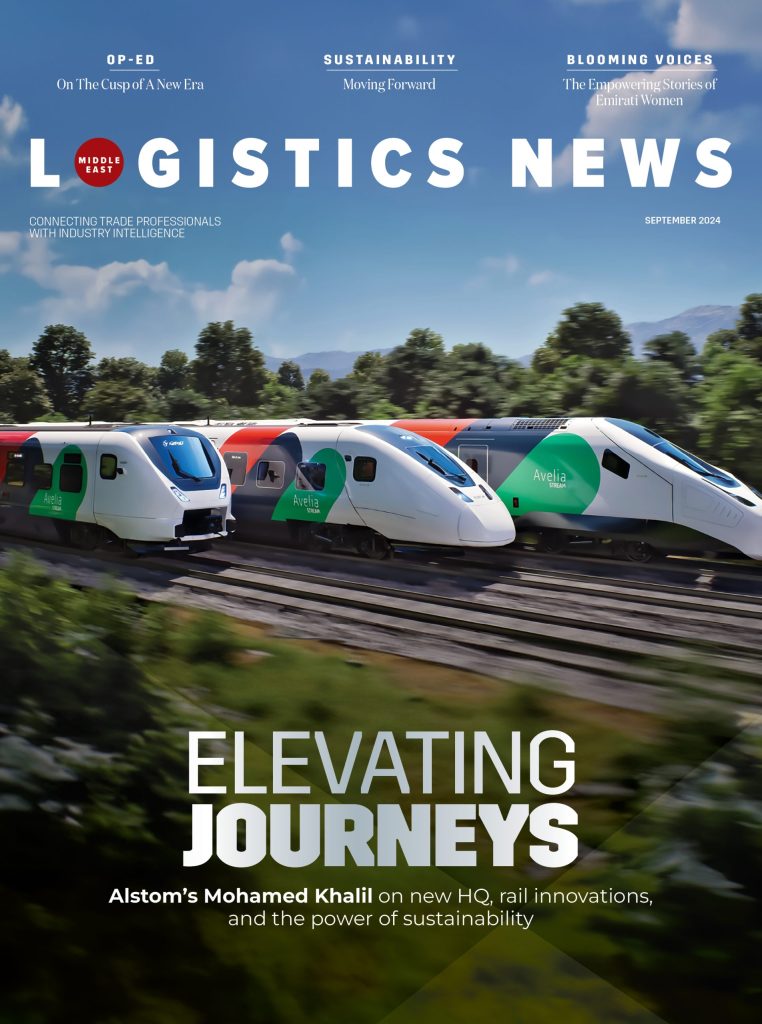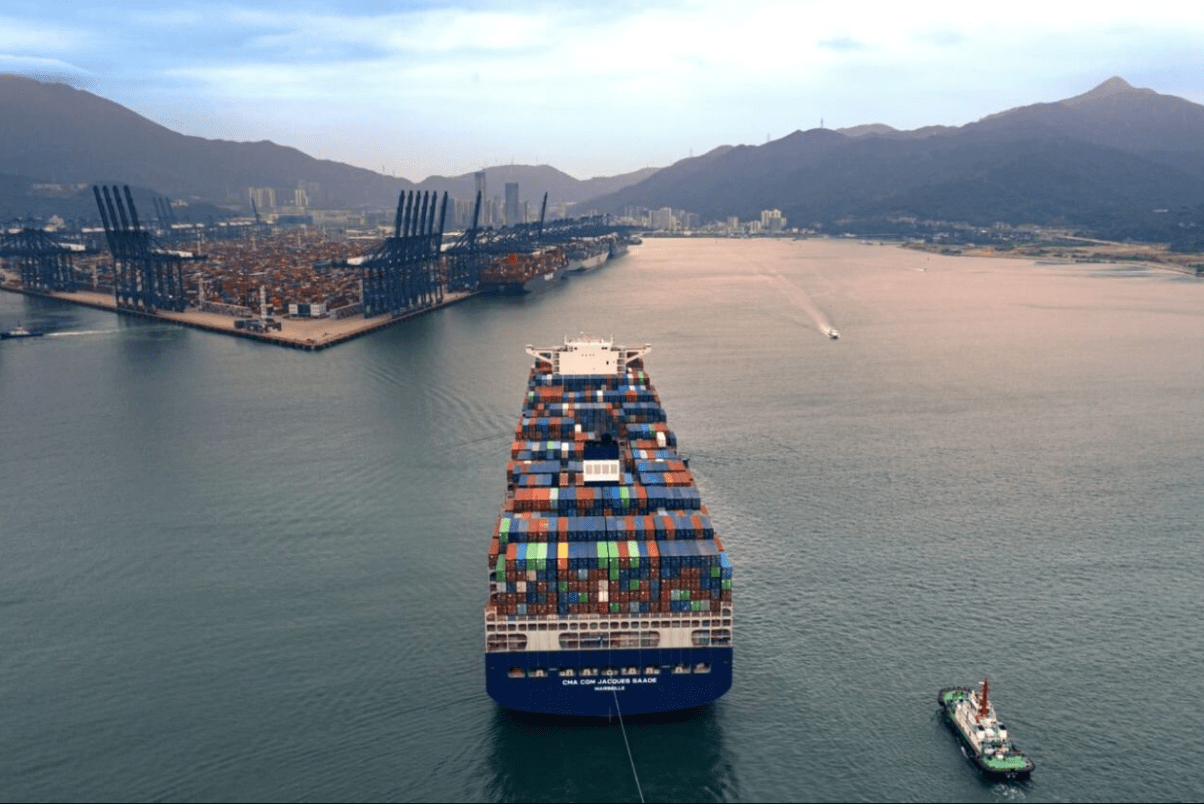Logistic

Top 10 African Countries with the Highest Export Values in 2025
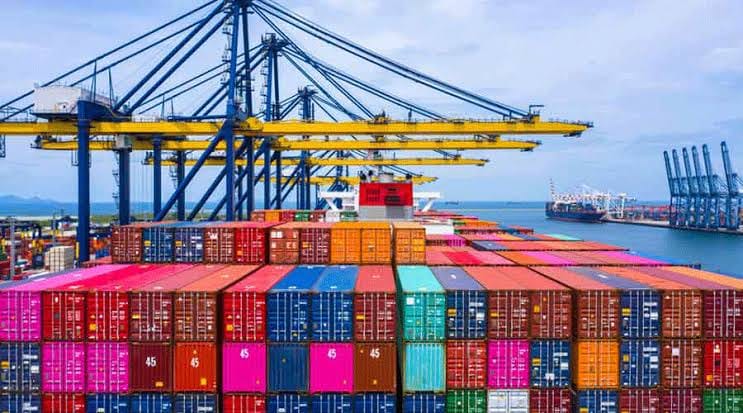
Export value has become one of the clearest indicators of Africa’s economic trajectory in 2025. Across the continent, countries are strengthening trade performance through infrastructure upgrades, modernized customs systems, and fiscal measures aimed at currency stabilization. To ensure an accurate ranking, all export values have been converted to US dollars based on current exchange rates, allowing for direct comparison across nations with different local currencies.
According to Trading Economics, several African economies have posted notable growth, reflecting both recovery from prior market disruptions and the expansion of industrial, energy, and agricultural capacity.
Africa’s trade ecosystem has evolved markedly over the past decade. The implementation of the African Continental Free Trade Area (AfCFTA) has encouraged governments to modernize ports, upgrade transport corridors, and harmonize tariffs, creating smoother pathways for both regional and international trade. While oil, gas, and mineral exports continue to dominate, non-oil sectors are increasingly contributing to overall trade value.
Despite global challenges including fluctuating demand, currency volatility, and shipping cost pressures, African exporters are demonstrating structural resilience. The continent’s export value reached nearly $682 billion USD in 2024, according to Afreximbank, supported by strong demand from Asia and Europe. National export promotion strategies, investment in industrial clusters, and improved logistics are enabling countries to move beyond raw commodity exports toward value-added products, processing, and packaging.
The following ranking of the Top 10 African Countries with the Highest Export Values in 2025, compiled using Trading Economics data, captures both the economic figures and the strategic foundations behind them. It highlights how governance, industrial policy, infrastructure, and macroeconomic stability converge to shape each country’s export profile.
Together, these nations illustrate how Africa is increasingly competing globally on value, leveraging infrastructure, innovation, and institutional capacity to build robust and diversified export economies.
10. Djibouti
Djibouti’s exports reached $4.062 million USD, positioning the country among Africa’s top exporters despite its small population of under one million. The country’s trade profile is dominated by port services, re-exports, and logistics-related goods, reflecting Djibouti’s strategic location on the Bab-el-Mandeb Strait, a critical chokepoint connecting the Red Sea to the Gulf of Aden. Shipping, fuel transshipment, and containerized cargo account for the majority of export value, with additional contributions from livestock, salt, and small-scale industrial products.
The Port of Djibouti serves as the centerpiece of national trade. Recent investments have expanded container terminals, bulk handling facilities, and free trade zones, positioning the country as a hub for East African trade. Djibouti’s port network supports Ethiopia’s landlocked economy, enabling exports of coffee, sesame, and manufactured goods through its terminals. The Djibouti International Free Trade Zone facilitates warehousing, re-export activities, and light processing industries, attracting foreign investment and linking the city-state to global shipping networks.
Infrastructure integration is central to Djibouti’s export model. The Djibouti–Addis Ababa Railway, constructed in partnership with Chinese investors, connects Ethiopia’s industrial and agricultural exports directly to the coast. Road networks link inland regions to key port terminals, enhancing logistics efficiency and reducing transit time. Investment in fuel storage and cold chain facilities has improved the handling of energy products and perishable goods, while digital customs systems streamline clearance and reduce bottlenecks, supporting predictable trade flows.
Policy and strategic planning continue to strengthen Djibouti’s trade advantage. The government emphasizes port modernization, industrial free zones, and regional connectivity as pillars of national export growth. Collaboration with international partners, including the World Bank and African Development Bank, supports infrastructure expansion, port efficiency programs, and technical assistance for export-oriented small and medium enterprises. By 2025, Djibouti exemplifies how a small nation can leverage geography, logistics, and institutional capacity to achieve high export performance, turning strategic location into measurable economic value.
9. Chad
Chad’s export value reached $4.763 million USD placing it among Africa’s notable exporters. Oil dominates the trade profile, representing the majority of export revenue, primarily produced in the Doba and Bongor basins. Crude shipments are exported via the Chad-Cameroon pipeline, connecting landlocked production areas to the port of Kribi in Cameroon. Alongside hydrocarbons, agricultural commodities such as cotton, gum arabic, and livestock contribute meaningfully to trade, reflecting the government’s ongoing efforts to diversify the export base.
Cotton remains a vital non-oil export, with Chad ranking among Africa’s top producers. Investments in modern ginning facilities and improved seed varieties have increased yield and quality, allowing Chadian cotton to access European and Asian textile markets. Gum arabic, used globally in food, pharmaceuticals, and cosmetics, continues to generate foreign exchange, with structured collection systems improving volume and consistency. Livestock exports, particularly cattle and camels, are concentrated in eastern and central regions, supported by vaccination programs and improved veterinary services to meet international health standards.
Infrastructure and logistics underpin Chad’s export capability despite its landlocked geography. The Chad-Cameroon pipeline remains the backbone for oil exports, while road networks connecting agricultural regions to Cameroon’s ports facilitate commodity flow. Upgrades to the N’Djamena–Kousseri corridor and regional bridges enhance transport efficiency and reduce transit costs for both oil and agricultural exports. The government has also invested in storage and processing facilities to improve value addition, particularly in cotton and gum arabic, ensuring products meet international quality and volume requirements.
Government policy focuses on increasing trade efficiency and broadening export composition. The National Export Development Plan emphasizes diversification into agriculture, agro-processing, and light manufacturing while maintaining oil production efficiency. Partnerships with international organizations and private investors support capacity building, technical assistance, and financing for export-oriented projects. By 2025, Chad demonstrates how landlocked countries can leverage strategic infrastructure, targeted agricultural programs, and pipeline-linked trade corridors to achieve significant export performance, turning geographic challenges into structured trade advantages.
8. Nigeria
Nigeria recorded exports valued at $5,117 million USD in early 2025 reflecting its status as one of Africa’s largest and most diversified exporting nations. Oil continues to dominate, accounting for approximately 85% of total export revenues, with key production fields in the Niger Delta such as Bonny, Bonga, and Forcados supplying crude to Europe, Asia, and the Americas. Refined petroleum products are increasingly exported through the Port Harcourt and Lagos terminals, supported by ongoing upgrades to domestic refineries and storage facilities.
Beyond hydrocarbons, Nigeria maintains a growing non-oil export sector. Agricultural products including cocoa, sesame seeds, cashew nuts, and yams contribute significantly to foreign earnings, with cocoa alone generating around $1 billion annually. Processed food exports, textiles, and leather goods are gaining international attention, particularly in European and African regional markets. The government has also prioritized value addition, with initiatives such as the Nigeria Export Supervision Scheme (NESS) ensuring quality standards, certification, and compliance with international buyers.
Nigeria’s export infrastructure has improved steadily. The Apapa and Tin Can Island ports in Lagos handle a large share of containerized and bulk exports, while inland dry ports like Kaduna and Kano facilitate the movement of agricultural and manufactured goods from northern states. The West Africa Gas Pipeline and new rail corridors connecting the inland regions to ports have reduced logistical bottlenecks and improved transit times. Public-private partnerships are increasingly leveraged to modernize port operations, warehouses, and export processing zones.
Government policies continue to strengthen export competitiveness. The Nigeria Export Development Strategy (NEDS) 2025 emphasizes non-oil industrialization, agro-processing clusters, and SMEs as export engines. Programs like the Nigerian Export Promotion Council (NEPC) provide technical support, finance facilitation, and trade promotion, while free trade agreements with ECOWAS and the AfCFTA integrate Nigeria further into regional and global markets. In 2025, Nigeria demonstrates a balance of resource-based exports and emerging industrial capacity, reflecting deliberate policies to diversify and modernize the country’s export economy.
7. Morocco
Morocco recorded exports of $6,756 million USD in early 2025 reflecting a well-structured and diversified export economy. The country’s trade is anchored in phosphates and derivatives, automotive components, textiles, and agricultural products. Morocco is the world’s largest phosphate exporter, with facilities in Khouribga, Gantour, and Youssoufia producing over 30 million tons annually. These minerals feed both domestic chemical industries and international markets, supplying fertilizers and industrial raw materials globally.
The automotive sector has emerged as a major export engine. Morocco hosts manufacturing plants for global brands including Renault and Peugeot, producing over 450,000 vehicles annually, most of which are exported to Europe and the United States. The automotive supply chain has spurred growth in mechanical components, wiring harnesses, and electronics, creating integrated industrial clusters in Casablanca, Tangier, and Kenitra. These clusters benefit from proximity to ports and trade corridors, enhancing logistics efficiency.
Agricultural exports remain significant, particularly citrus fruits, olives, and processed foods. Morocco’s adoption of modern irrigation techniques, greenhouses, and quality certification has increased both yield and compliance with international standards. The Port of Casablanca and Tangier-Med serve as critical gateways, handling high volumes of containerized exports and linking industrial and agricultural zones to global markets. Tangier-Med, in particular, is a deep-water port capable of handling some of Africa’s largest cargo ships, facilitating both import and export flows efficiently.
Morocco continues to invest in export diversification and infrastructure modernization. The National Export Strategy 2025 emphasizes industrial upgrading, renewable energy for manufacturing, and digitalization of trade processes. Incentives through the Moroccan Investment Development Agency (AMDI) and free zones encourage foreign investment in high-value sectors like automotive electronics, aeronautics, and renewable energy equipment. Morocco’s approach demonstrates how a mid-sized African economy can integrate mineral wealth, industrial capacity, and strategic logistics to sustain a strong export performance.
6. Republic of the Congo
The Republic of the Congo recorded exports of $6,900 million USD in early 2025 reflecting a trade economy dominated by oil while increasingly diversifying into timber, minerals, and industrial products. Crude oil remains the cornerstone of exports, produced primarily from offshore fields such as Moho-Bilondo, Nkossa, and M’Boundi, and exported mainly to China, the United States, and France. Oil revenues continue to fund national development programs and underpin industrial investment in secondary sectors.
Timber and forestry products have become significant non-oil export contributors. Managed under strict regulatory oversight, Congo’s tropical forests produce high-quality logs and finished wood products destined for European and Asian markets. Mining of minerals such as potash, limestone, and iron ore is expanding through projects in Sangha and Kouilou regions, with increasing attention to environmental and sustainability standards to ensure long-term viability. Agro-industrial exports, including cocoa and palm oil, also contribute to the non-oil export portfolio, supported by technical assistance programs and improved processing capacity.
Export infrastructure supports both oil and non-oil sectors effectively. The Port of Pointe-Noire, the country’s primary maritime gateway, handles over 90% of cargo throughput and has undergone modernization to accommodate larger vessels and container traffic. Inland logistics are strengthened by rail connections from industrial and mining zones to the coast, reducing transit times and improving reliability. Additionally, the Brazzaville–Pointe-Noire highway facilitates domestic transport for agricultural and mineral products, linking production regions directly to export hubs.
Government policy aims to broaden export capacity while maintaining quality and sustainability. The Vision Congo 2025 Plan prioritizes economic diversification, infrastructure upgrades, and industrial park development. Public-private partnerships and international collaborations support value addition in timber, mining, and agriculture. Investments in digital land registries, port modernization, and export finance enhance operational efficiency and attract foreign investors. In 2025, the Republic of the Congo demonstrates how a resource-dependent economy can leverage infrastructure, governance, and industrial policy to expand and stabilize its export profile across multiple sectors.
5. Angola
Angola recorded exports of $7.207 million USD in early 2025 positioning it among Africa’s leading exporters. The country’s economy remains heavily reliant on oil, which accounts for nearly 90% of export revenues. Key oil fields, including Girassol, Kuito, and Palanca, feed offshore production facilities managed by multinational companies such as TotalEnergies, Chevron, and ExxonMobil. Crude oil is exported mainly to China, India, and Europe, while refined petroleum products are gradually increasing as domestic refining capacity expands.
Beyond hydrocarbons, Angola is expanding into other sectors to diversify exports. Diamonds, sourced primarily from Lunda Norte and Lunda Sul, contribute significantly to revenues through rough stone exports, with strict regulatory frameworks under the Angolan Institute of Diamonds (IDM) ensuring quality and legal compliance. Agricultural products, including coffee, sisal, and sugar, are small but growing components of the export portfolio, supported by government programs to rehabilitate farmland and modernize processing facilities.
Infrastructure and logistics have improved to support export flows. The Port of Luanda, Angola’s main maritime gateway, has undergone modernization with container terminal expansions and upgraded storage facilities. The Benguela Railway, linking the port of Lobito to inland mining regions, has enhanced mineral export capacity, while road improvements have facilitated the movement of agricultural goods from production zones to coastal ports. Angola is also leveraging partnerships with Brazil, China, and Portugal to strengthen port management and industrial logistics.
Policy initiatives continue to focus on sustainable export growth and economic diversification. The Angolan National Development Plan 2023–2027 targets the expansion of non-oil sectors, including agriculture, fisheries, and mining. Special Economic Zones and industrial corridors, such as the Lobito Corridor, attract investment in processing, logistics, and export-oriented manufacturing. Angola’s export performance in 2025 reflects a combination of hydrocarbon dominance and strategic efforts to broaden the economy while enhancing infrastructure and institutional capacity.
4. South Africa
South Africa recorded exports of $9,886 USD million. The country’s trade is highly diversified, spanning minerals, metals, machinery, vehicles, chemicals, and agricultural products. Key mineral exports include gold, platinum, coal, and iron ore, sourced from mines in Gauteng, Mpumalanga, and the Bushveld Complex, while the automotive sector, concentrated in Gauteng, Eastern Cape, and KwaZulu-Natal, produces vehicles and components for European, North American, and African markets.
Industrial capacity in South Africa underpins its export competitiveness. The Johannesburg–Durban corridor serves as a hub for manufacturing and logistics, linking mines, factories, and ports efficiently. Automotive manufacturers including Volkswagen, BMW, and Toyota operate integrated supply chains, producing vehicles and components for export. Steel, aluminum, and chemical industries leverage proximity to ports and transport networks to serve international markets. Agricultural exports, such as citrus, wine, and maize, originate from the Western Cape, Limpopo, and KwaZulu-Natal, supported by modern irrigation and processing facilities that ensure consistent quality and volume.
South Africa’s port infrastructure facilitates global trade efficiently. Durban, Cape Town, and Port Elizabeth ports handle the majority of containerized and bulk cargo, with ongoing upgrades in container terminals, deepening of berths, and automation of handling processes. Inland logistics are strengthened by rail networks such as Transnet Freight Rail, linking mining and industrial regions to ports. These systems reduce transit times and improve export reliability, enabling the country to maintain strong trade relationships with Europe, Asia, and Africa.
Policy frameworks and investment incentives reinforce South Africa’s export strength. The Industrial Policy Action Plan (IPAP) and National Export Strategy 2025 promote value addition, export finance support, and competitiveness in global markets. Special Economic Zones and trade facilitation programs enhance industrial clusters and manufacturing output, while public-private partnerships support infrastructure development and logistics efficiency. South Africa’s export profile in 2025 demonstrates how a diversified industrial base, modern infrastructure, and strategic policy implementation sustain Africa’s largest and most complex export economy.
3. Algeria
Algeria recorded exports of $12,451 million USD in early 2025 reflecting a trade profile heavily anchored in hydrocarbons. Oil and natural gas account for more than 90% of total export revenues, with production concentrated in the Hassi Messaoud, Hassi R’Mel, and In Amenas fields. Algeria remains a key supplier of liquefied natural gas (LNG) to Europe, particularly Spain and Italy, through the Arzew and Skikda LNG terminals, while crude oil exports continue to flow to Asia and North America. The country’s strategic positioning in the Mediterranean and extensive pipeline network, including the Trans-Mediterranean Gas Pipeline, reinforces its role in regional energy security.
Industrial diversification is gradually shaping Algeria’s export landscape. The government has invested in petrochemicals, fertilizers, and steel production to add value to raw hydrocarbons. Fertilizer exports, derived from natural gas through ammonia and urea production, have grown steadily, supplying markets in Africa, Europe, and South America. Small but expanding non-hydrocarbon exports include dates, olives, and textiles, with targeted government programs supporting agricultural processing zones in Setif, Constantine, and Oran. Algeria aims to leverage industrial clusters near urban centers to enhance export diversification while maintaining high standards for quality and traceability.
Algeria has strengthened its infrastructure to support trade efficiency. Modernization of Algiers, Oran, and Annaba ports has improved cargo handling, while upgrades to the Trans-Saharan Highway and inland rail networks facilitate movement from production areas to Mediterranean ports. Investment in storage facilities and pipeline maintenance ensures reliable supply chains, while the government has also encouraged private sector participation in logistics and port operations. These measures are central to reducing costs and improving the predictability of exports, positioning Algeria as a stable and reliable supplier in global markets.
Policy initiatives are focused on long-term sustainability and diversification. The National Economic Recovery Plan emphasizes industrialization, export finance support, and regulatory reforms to attract foreign direct investment. Special economic zones and incentives for petrochemical and agro-industrial projects are being implemented to reduce dependency on hydrocarbons. Programs like the Algeria Export Development Agency provide technical support and facilitate compliance with international standards, while partnerships with European and Asian investors drive infrastructure and industrial capacity. Algeria’s export strategy in 2025 illustrates a combination of resource leverage, industrial planning, and strategic infrastructure development that sustains its position among Africa’s leading exporting nations.
2. Congo
Congo recorded exports valued at $29,601 million USD in early 2025, positioning it among Africa’s top export economies. Oil continues to dominate, contributing over 60% of total export revenue. Major offshore and onshore fields, including Nkossa, Moho-Bilondo, Kitina, and Litanzi, supply crude primarily to Europe, China, and other Asian markets. Refined petroleum products, processed at facilities near Pointe-Noire, complement crude exports, while small-scale mineral outputs such as gold, potash, and limestone are emerging as supplementary contributors.
The timber and forestry sector has grown steadily as a non-oil export driver. Congo’s forests are among the most biodiverse in Africa, and the government has partnered with international agencies to implement sustainable harvesting practices that meet Forest Stewardship Council (FSC) standards. This ensures access to premium global markets while preserving environmental integrity. Additionally, agricultural exports like cocoa, coffee, and palm oil have seen steady growth due to government programs providing technical support, access to improved seedlings, and rural infrastructure upgrades in regions such as Sangha, Niari, and Kouilou.
Infrastructure investment underpins Congo’s export performance. The Port of Pointe-Noire, recently modernized with expanded container terminals and upgraded berths, handles the bulk of the country’s maritime trade. Inland, the Brazzaville–Pointe-Noire railway, maintained by state and private partners, connects central production zones to the coast, reducing transit time and enhancing cargo reliability. Road networks linking production hubs to railheads and ports, including the Kouilou corridor, have improved internal distribution for both oil-related and non-oil commodities, strengthening the national logistics chain.
Policy frameworks and institutional reforms continue to enhance Congo’s trade competitiveness. The Vision Congo 2025 strategy emphasizes economic diversification, industrial park development, and public-private partnerships, promoting value addition in forestry, mining, and agriculture. Digitalization efforts, such as land registry digitization and customs automation, streamline export procedures and attract foreign investment. Collaborative initiatives with international organizations support sustainable practices in resource management, infrastructure planning, and climate resilience. By 2025, Congo exemplifies how strategic planning, infrastructure, and governance can transform a resource-heavy economy into a diversified, high-value export system.
1. Libya
Libya recorded exports of $29,804 million USD in early 2025 maintaining its position as Africa’s leading exporter. The country’s economy is overwhelmingly oil-dependent, with hydrocarbons accounting for over 90% of export revenues. Key production fields include Sharara, El Feel, Bouri, and Waha, with crude oil exported primarily to Europe, Asia, and North Africa. Libya’s refined petroleum products, processed at the Ras Lanuf, Zawiya, and Brega refineries, complement crude exports, supporting both domestic and regional energy markets.
The oil sector in Libya is integrated with a network of pipelines, ports, and storage facilities that ensure efficient export flows. The Es Sider, Ras Lanuf, and Zueitina terminals serve as primary maritime gateways, capable of handling large crude carriers. Inland pipelines connect production fields to coastal terminals, reducing logistical bottlenecks. Additionally, the country is leveraging new technologies for real-time monitoring of production and pipeline integrity, enhancing both safety and efficiency in oil logistics.
Beyond hydrocarbons, Libya has begun initiatives to diversify exports gradually, focusing on petrochemicals, cement, and food processing. The government has encouraged industrial clustering near urban centers such as Tripoli, Misrata, and Benghazi, aligning production with port access to facilitate exports. Agricultural products like olives, dates, and citrus, while minor in total value, contribute to regional trade and are supported by irrigation modernization projects.
Policy and institutional reforms support Libya’s export management and long-term resilience. The Libyan National Oil Corporation (NOC) coordinates production, marketing, and infrastructure investment, while partnerships with international firms optimize technical capacity and market access. Upgrades to ports, refineries, and transport networks are complemented by regulatory improvements to ensure compliance with global trade standards. In 2025, Libya’s export landscape demonstrates how a resource-rich nation can maintain high export value through strategic infrastructure, institutional coordination, and careful integration of emerging sectors alongside its hydrocarbon backbone.



